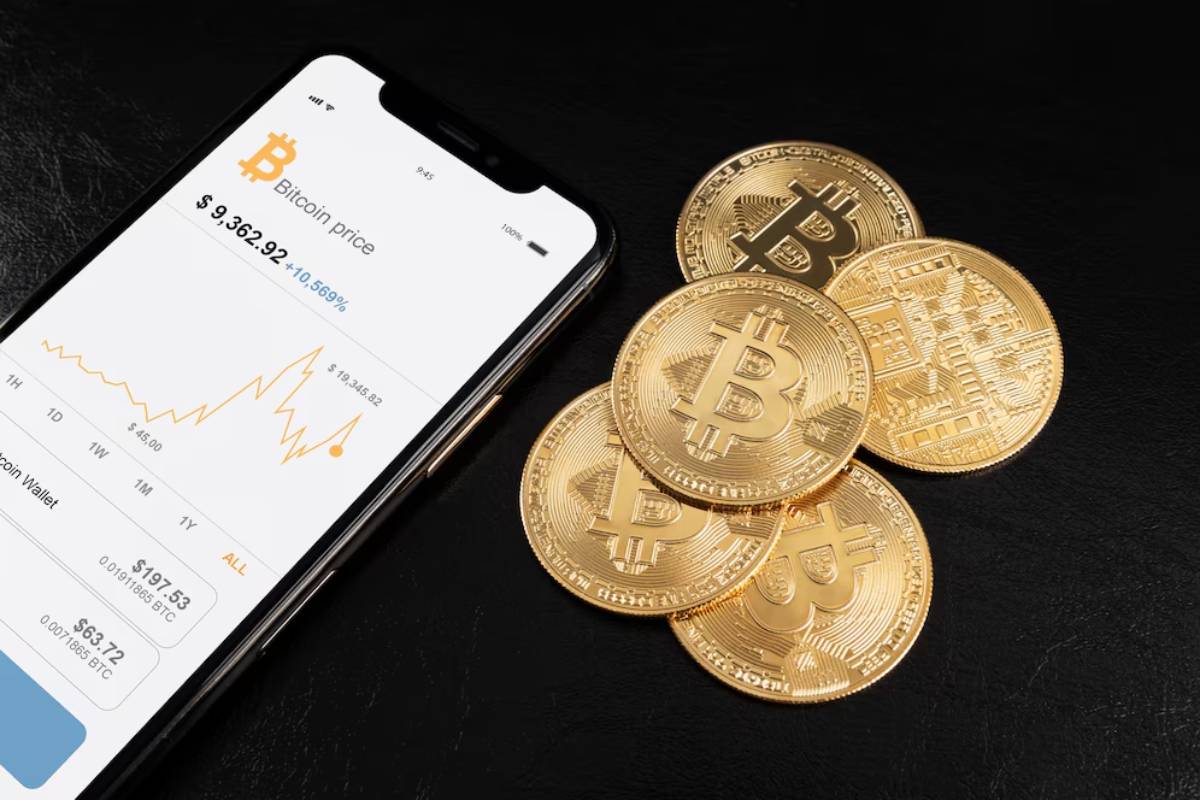
How to Protect Your Crypto Portfolio from Market Volatility
You need an intelligent plan to safeguard your digital assets. Prices can vary significantly from hour to hour. This guide explains how to protect your crypto portfolio from market volatility. It also provides useful strategies, tools , and mindset changes that can support you.
Whether an experienced investor or new to crypto, you must have an understanding of volatility. It’s key to managing risk and achieving long-term success. We’ll cover all you need to know. From hedging techniques to smart diversification, you’ll navigate this unpredictable market with confidence.
Understanding the Core
Why Is Crypto So Volatile?
Cryptocurrencies are often more volatile than traditional assets. This is because they are decentralised and face changing regulations. Speculative trading also plays a big role, along with their lower liquidity compared to global markets. News events, social media sentiment, or a single tweet from a major figure can trigger massive price swings.
The Importance of a Strategy
Without a plan, it’s easy to panic during downturns or get swept up in hype during bull runs. A solid crypto volatility strategy won’t remove all risk, but it can lower your exposure. This helps you stay calm when things get tough.
Quick Guide
- Diversify your portfolio with a mix of stablecoins and major cryptocurrencies.
- Set stop-loss and take-profit orders to automate your risk management.
- Use cold storage to secure your long-term holdings.
- Stay updated on news and regulations that could impact market sentiment.
- Avoid over-leveraging your positions during periods of high volatility.
Step-by-Step Guide
1. Diversify Your Crypto Holdings
Investing all your capital in one coin, especially a highly volatile altcoin, can be disastrous. Spread your investments across:
- Blue-chip cryptocurrencies (e.g., Bitcoin, Ethereum)
- Stablecoins (e.g., USDC, USDT) to protect value during downturns
- Utility tokens or DeFi assets for additional growth opportunities
Pro Tip: Set aside part of your portfolio for non-correlated assets. Consider precious metals, stocks, or crypto index funds. This can help lower your overall risk.
2. Hedge Against Market Swings
Hedging is a strategy to offset potential losses. In crypto, this might look like:
- Using futures or options contracts to short the market
- Allocating funds into inverse ETFs or tokens that gain when the market drops
- Holding stablecoins to preserve capital during uncertain times
These tools can be complex, so it’s crucial to understand how they work before using them. Start small, and use paper trading platforms if you’re still learning.
3. Implement Stop-Loss and Take-Profit Orders
These automated orders help protect gains and limit losses:
- Stop-loss: Automatically sells your asset when it falls to a set price
- Take-profit: Automatically sells when the price reaches a set high
Setting these limits helps you keep emotions in check while trading in fast markets.
4. Secure Your Assets in Cold Storage
Volatile markets often coincide with increased cyber threats. Store long-term holdings in cold wallets (hardware wallets) rather than on exchanges. This minimises the risk of hacks, especially during periods of market panic when exchange traffic surges.
Important Tip: Use multi-factor authentication and never store your seed phrase online to add extra layers of protection.
5. Regularly Rebalance Your Portfolio
As prices fluctuate, the proportions of each asset in your portfolio can shift. Rebalancing helps:
- Maintain your desired risk level
- Lock in profits from overperforming assets
- Prevent overexposure to underperforming or risky assets
Aim to rebalance quarterly or when market conditions change significantly.
Important Notes
- Emotions are the biggest threat to your crypto investments. Create a strategy and stick to it regardless of market noise.
- Never invest more than you can afford to lose. The crypto market can be ruthless, and capital preservation should always be a top priority.
- Use trusted exchanges and tools. Don’t chase high returns from unverified platforms promising quick gains.
Best Practices and Additional Insights

Monitor Market Sentiment
Use tools like the Crypto Fear & Greed Index, social sentiment trackers, and volume trends to gauge market mood. Sentiment indicators won’t predict exact moves, but they help you understand the broader context.
Stay Informed
Subscribe to reputable news sources, follow regulatory updates, and track major project developments. A sudden regulatory crackdown can impact not just one coin but the entire market.
Pro Tip: Set alerts for big events. These include Bitcoin halving, ETF approvals, and interest rate announcements. They often cause market shifts.
Consider Dollar-Cost Averaging (DCA)
Rather than investing a lump sum at once, invest smaller amounts at regular intervals. This strategy reduces the impact of short-term volatility and emotional decision-making.
Avoid Overtrading
Trying to time every market movement can lead to burnout and financial losses. Identify your goals. Think about long-term growth or short-term profit. Then, pick a strategy that matches.
FAQs

What Is the Best Way to Hedge My Crypto Portfolio?
The best hedging strategies include using stablecoins, futures contracts, or options trading. For beginners, simply converting a portion of assets into stablecoins during volatile periods is a safe and effective starting point.
Can Diversification Really Reduce My Risk?
Yes, diversification can help spread risk across different types of assets. It ensures that if one coin crashes, your entire portfolio doesn’t suffer as severely.
Should I Pull Out During a Market Crash?
Not necessarily. If your investments are based on long-term value, temporary dips shouldn’t scare you. Instead, consider whether the fundamentals of your investments have changed. If they haven’t, you may even find a good buying opportunity.
How Often Should I Check My Portfolio?
Daily checking can lead to stress and impulsive decisions. Unless you’re a day trader, reviewing your portfolio weekly or biweekly is usually enough to stay informed and make adjustments as needed.
Is Cold Storage Necessary for Every Investor?
Not for everyone, but it’s highly recommended if you hold significant amounts or plan to HODL for the long term. Cold storage removes your assets from the online environment, making them less vulnerable to cyberattacks.
Staying Steady in a Shaky Market
The key to safeguarding your crypto portfolio against market highs and lows is not reacting to price fluctuations. Keep your mind on building a great strategy. This strategy must be evidence-influenced and target long-term success. You can always diversify your holdings, apply hedging strategies and protect your assets. Staying calm also matters. Follow these steps and you’ll be able to withstand market volatility with confidence.
After all, volatility goes hand in hand with the crypto landscape. Don’t fear uncertainty. Instead, get the tools and understanding you need. This way, you can manage it well and turn challenges into opportunities.